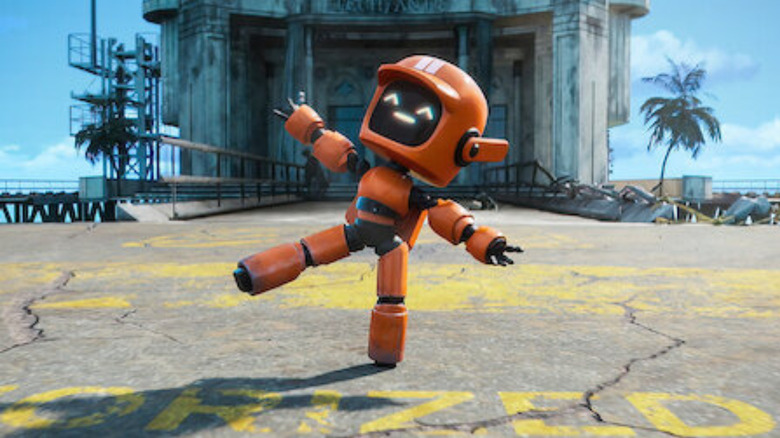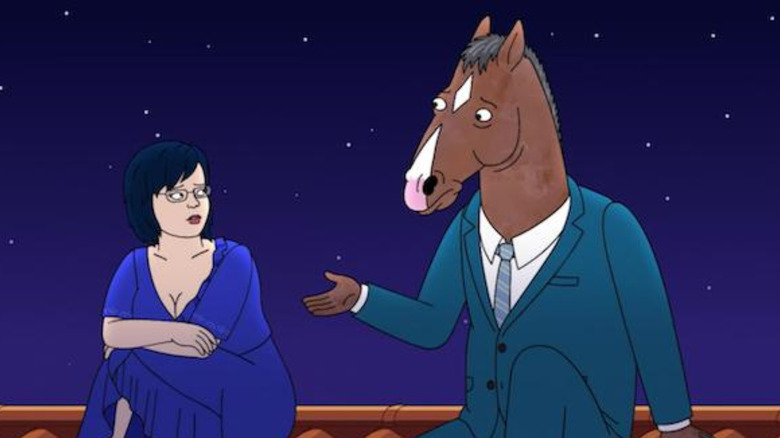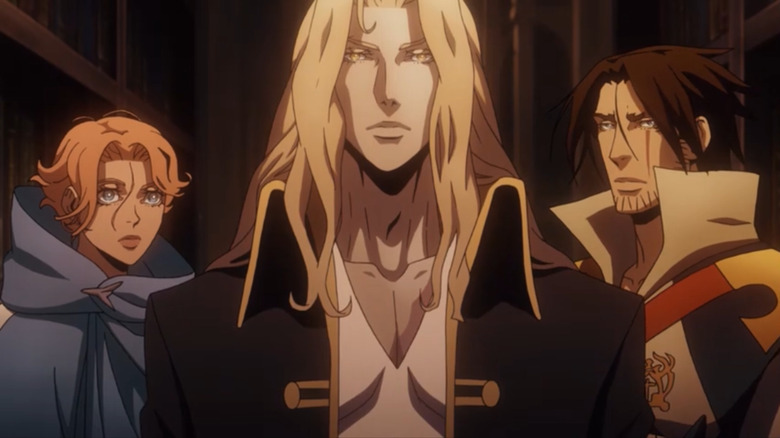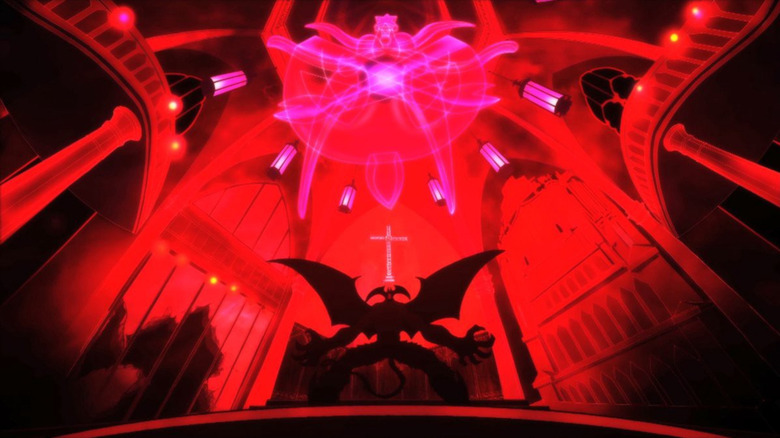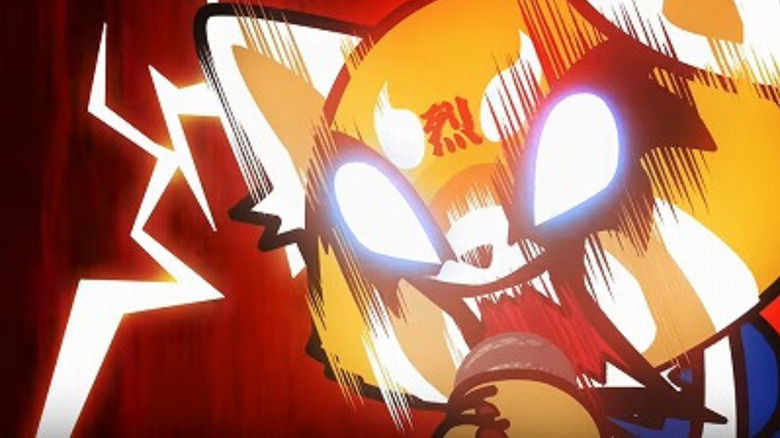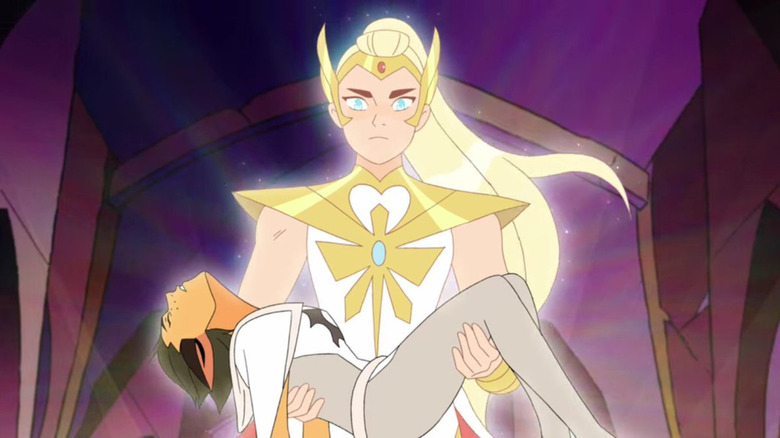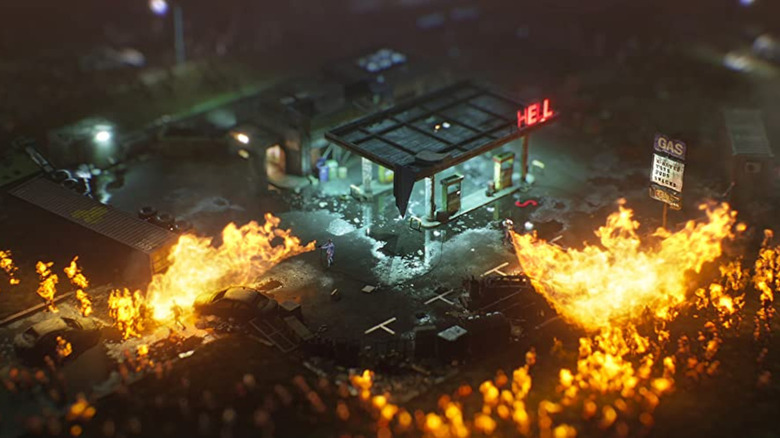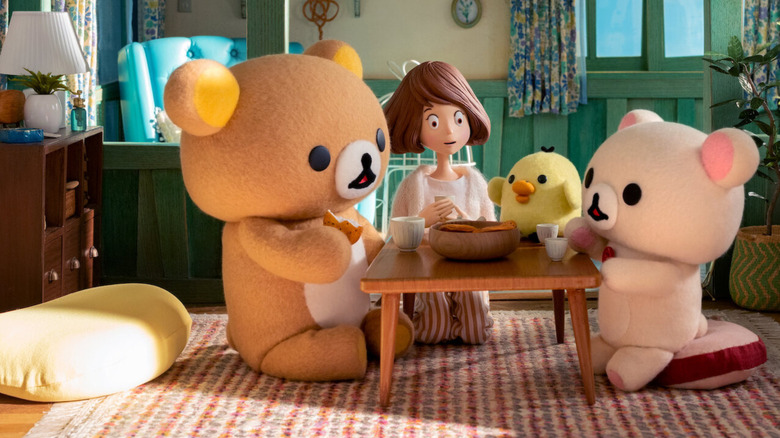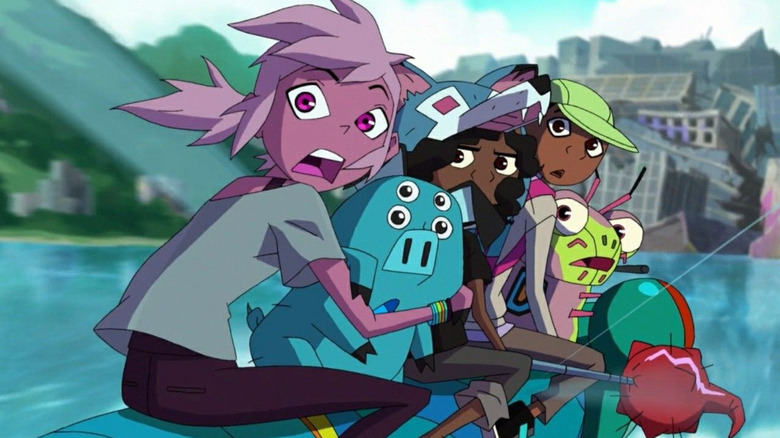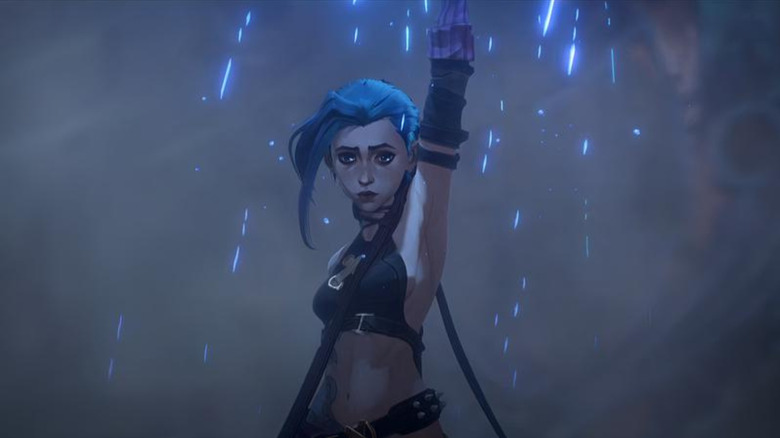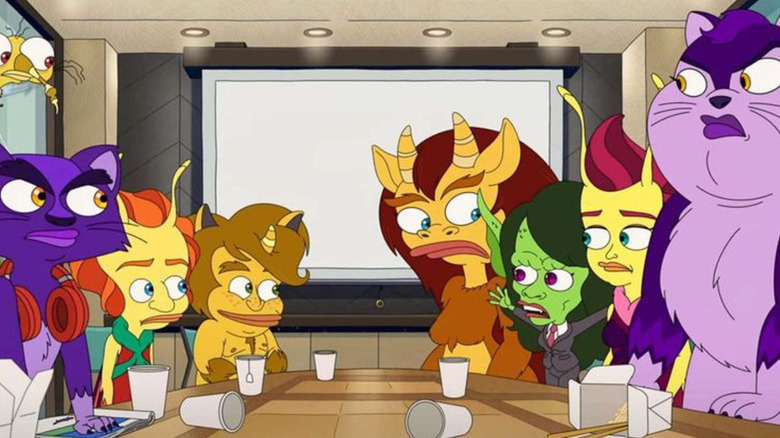The 10 Best Netflix Original Animated Series
The future of animation on Netflix is a bit grim. Despite an interesting showcase at the Annecy International Animation Film Festival, it was revealed this past April that Netflix would be drastically cutting down on its animated programming. This move, made in the wake of various scandals for the streamer, included high-profile cancelations such as the long-gestating "Bone" series and Ava DuVernay's adaptation of "Wings of Fire." Knowing what we know now about the creative folks who were affected by this shake-up, watching their shows hits a little differently.
However, that isn't to say that we shouldn't appreciate the shows these people have already released. After all, it's undeniable that the streamer has put out some great shows by these creators and animators. Whether you want to experience some great art or are just looking for a new animated show to watch, here is an unranked list of some of Netflix's best original projects, made by animators and creatives who care about the craft.
Please note that this list will include anime titles, but will only include titles produced exclusively for Netflix. It will not include titles that Netflix has the international broadcasting licenses for, such as "Beastars" and "Kakegurui." Look, it's only fair.
BoJack Horseman
It would be a crying shame not to include one of Netflix's first major projects in not only animation but in television production in general. It would also be shameful to not include "BoJack Horseman" because, well, it's "BoJack Horseman." Raphael Bob-Waksberg's sitcom about the titular washed-up TV star (Will Arnett) evolved throughout the seasons, using the medium of animation to tell a heartbreaking but simultaneously heartwarming story of depression and fame. Lasting six seasons and ending in 2020, one might wonder how long it would've lasted with Netflix had it been pitched under the streamer's current expectations.
After all, it discussed a lot of societal topics before Netflix figured out they could make separate social media accounts to capitalize on diversity conversations. From discussions of abortion in season 3 to season 5's ongoing themes of victim support and accountability in the wake of the #MeToo movement, "BoJack Horseman" did the impossible: It made us laugh about extremely dark and often harrowing subject matter, but not in a way where we laughed at those topics.
Castlevania
If there was any entry on this list that would be prone to controversy, it's probably this one. Netflix's four-season spanning "Castlevania" adaptation wasn't exactly the most well-paced series in the world, and some hardcore fans might have bemoaned some of the changes made to the franchise's lore. We also have to acknowledge the misconduct allegations against showrunner Warren Ellis. However, it can't be denied that "Castlevania" carried a real love of the original video games within it, adapting the lore just enough so that both new viewers and longtime fans could be equally engaged in the exploits of Trevor Belmont (Richard Armitage), Alucard Țepeș (James Callis), and Sypha Belnades (Alejandra Reynoso).
And Netflix and Powerhouse Animation succeeded in getting viewers engaged. "Castlevania" was bolstered by its anime-influenced art design and a strong voice cast that fit into their roles perfectly. If anything, the only thing setting the show back was Ellis, who served as the show's sole writer and was responsible for a lot of the pacing and characterization issues fans took issue with (seriously, why were they in that library so much in season 2?). Even if some things could be better, "Castlevania" still pulled off an impressive feat: It was an animated video game adaptation that was not only respectful of what came before it, but was engaging enough to bring in new fans to the franchise all on its own.
Devilman Crybaby
Given the iconic status of "Devilman," it wasn't surprising that fans were skeptical of this new adaptation when it was initially announced. However, this grown-up version of the wildly popular manga and anime succeeded mostly because it elevated the original material rather than trying to recreate it. Netflix and Science SARU used the fact that the manga and original anime were relatively tame by today's standards to reintroduce "Devilman" in the graphic, sexual, and disturbing way it was always meant to be.
"Devilman Crybaby" was a much-needed shot in the arm for the franchise. Both the original Japanese voice-overs and the English dub were well-done, while the animation and character designs were faithful to the original manga while updating it for modern times. In fact, the entire series seemed much better off being updated, a testament to just how ahead of the times the original "Devilman" was. You might feel conflicted when the final episode's credits roll, but the "Devilman Crybaby" journey is one you need to take.
Aggretsuko
We all have our coping mechanisms and stress-relieving practices, but is one of yours going to a karaoke bar to sing death metal? Probably not, but that's exactly what our anthropomorphic red panda protagonist does here. "Aggretsuko" is the Netflix-funded follow-up to a popular Japanese anime of the same name, introducing viewers to the anxious Retsuko (Kaolip in Japanese, Erica Mendez in English), who vents her frustrations at the world in the coolest way possible. She was previously able to keep her two worlds strictly apart, but after a series of events at her day-time accounting job, Retsuko finds her life changing for both the best and the worst.
Admittedly, the later seasons of "Aggretsuko" tend to shy away from its central character to focus on her co-workers and friends. However, the fun art style, the smooth animation, and the genuinely entertaining death metal songs (sung by show director Rarecho in Japanese and Jamison Boaz in English) have kept viewers entertained for four seasons now. It might not be for everyone, but if you are down with weirdly unique anime, Retsuko and her worlds could be perfect for you.
She-Ra and the Princesses of Power
Don't let a vocal minority on Twitter fool you: "She-Ra and the Princesses of Power" was a genuinely great show. This reimagining of the 1985 cartoon "She-Ra: Princess of Power" let itself free from its connections to "Masters of the Universe" and gave a newfound focus to Adora (Aimee Carrero). By doing so, it helped to re-establish She-Ra as both a fierce warrior and a complex individual, anchored by her lingering feelings for her friend-turned-enemy Catra (AJ Michalka).
However, it is not just the character development and LGBTQ+ representation that makes "Princesses of Power" worth checking out. Its unique animation style immediately makes it stand out among similar cartoons, with each character reaching a perfect middle between being heavily detailed and simplistically styled; characters like Scorpia (Lauren Ash) and Double Trouble (Jacob Tobia) are instantly memorable due to their designs. The show's fights are also really cool to watch, being a fluid showcase of how She-Ra and her friends really are some of the most powerful monarchs around.
Love Death + Robots
Perhaps the most visceral of the shows on this list, "Love Death + Robots" is a showcase of animated shorts from different studios around the world. Developed by Tim Miller and executive produced by David Fincher, the shorts often focus on the titular three subjects but also dabble in surrealism, black comedy, horror, and, of course, science fiction.
A strong case could be made that "Love Death + Robots" is one of the most creative and daring projects Netflix has ever green-lit. The work of studios such as Passion Animation, Blow Studio, Unit Image, and Polygon Pictures is given time to shine in a showcase of how powerful the medium of animation really is. This talent is shown through a different range of animation styles, with one example being the particularly fun "Night of the Mini Dead" from 2022's Volume III, constructed entirely through miniature sets and animated through stop-motion. No matter what your favorite style of animation is, you are sure to find a wonderful short film within the three volumes of "Love Death + Robots."
Rilakkuma and Kaoru
If the way "Aggretsuko" depicts the millennial working class turns out to be too intense for you, here's something completely different. Perhaps the ultimate comfort watch, "Rilakkuma and Kaoru" holds the distinction of being the only stop-motion animated show on this list. It's a simple story that you can immediately fall into once you turn it on after a long day: Kaoru (Mikako Tabe in Japanese, Lana Condor in English) has a group of lovable characters living with her that help teach her the importance of appreciating life outside of the tiring office grind. One of these characters is the lovable and recognizable bear Rilakkuma, a popular mascot in Japan.
This series flew under the radar when it was first released in 2019, which really is a shame. The feel-good nature of "Rilakkuma and Kaoru" never overstays its welcome, since each episode is just around 12 minutes long. It also has a heartening message that we could all hear a little more of, that we shouldn't let the problems of adulthood make us forget what it's like to relax and have fun. We recommend watching this show with a fuzzy blanket.
Kipo and the Age of Wonderbeasts
"Kipo and the Age of Wonderbeasts" was just too good for this world. Released in three seasons over the course of one year, DreamWorks Animation and Studio Mir's series followed the titular Kipo (Karen Fukuhara), who finds herself on a quest to reunite with her father (Sterling K. Brown). Despite being set against the backdrop of a devastating apocalypse, Kipo finds hope with her friends Wolf (Sydney Mikayla), Benson (Coy Stewart), and Dave (Deon Cole) as they traverse the surface world for the truth about Kipo's family.
Despite being a kid's show, the worldbuilding is extremely intricate, making it easy for adults to appreciate it as well. It is clear that there was a lot of time put into making the world of Las Vistas feel like a setting with a long history of conflict and war. Not only that, but the show's visual style feels wholly unique. While we might not be revisiting Las Vistas again any time soon, we are beyond thankful that we got to experience the full story of "Kipo and the Age of Wonderbeasts" when we could.
Arcane
To say that "League of Legends" is popular is a massive understatement. It currently stands as the most popular game in esports due to its complex combat system, although it is also extremely popular with more casual players as well. Part of the reason why it has such a large fanbase is its elaborate worldbuilding, which also served as the primary draw for "Arcane." Centering on the familial relationship between the playable characters Vi (Hailee Steinfeld) and Jinx (Ella Purnell), the show dives further into the conflict between the cities of Piltover and Zaun, two of the many regions explored in the game.
Perhaps the greatest achievement of "Arcane" is that it didn't just attract fans of "League of Legends." You don't have to know anything about the game to enjoy this spin-off show, as the appropriate lore is explained in a natural way and its characters are well-written and engaging. It is also simply stunning to look at, with the worlds and character designs being given just the right amount of tweaks for them to be successfully adapted to animation.
Human Resources
It might seem strange to list "Human Resources" on this round-up and not "Big Mouth," the show that spawned it. However, there's a good reason behind this decision, and that's the fact that the Hormone Monsters are just more fun to follow. This spin-off takes its attention away from New York middle-schoolers and onto adults struggling with different emotions. It also highlights the surprising complexity of the work of the Hormone Monsters -– they are assigned different individuals depending on what's happening in the personal lives of their clientele. From first-time mothers to teenage lovers, the monsters must help their clients while also navigating their personal lives.
If you are put off by the art style of "Big Mouth," you won't find anything different in "Human Resources" on a stylistic level. However, it is compelling to see how the world of the monsters works outside of the gaggle of kids they are usually seen with. As long as you understand that these characters are hormones manifesting as monsters to help people deal with their emotions, you can skip "Big Mouth" and go straight to "Human Resources," which is a more easy-going viewing experience.
